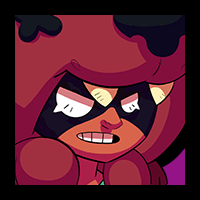Piper has long been a fan favorite for her high damage and long-range capabilities, but recent nerfs have shifted her standing in the current Brawl Stars meta. With her first gadget now lacking the slow effect, many players find her less effective, especially when paired against the plethora of counters available. Understanding how to play Piper effectively requires a deep dive into optimal matchups, gadget utilization, and team synergy.
One of the primary reasons Piper feels underwhelming in the current meta is the sheer number of brawlers who can easily counter her. Brawlers like Frank, Rico, and Buzz have emerged as significant threats, exploiting Piper's weaknesses and making it difficult for her to maintain lane control. As a result, it’s crucial to recognize when Piper is a viable pick and when to avoid her, especially in the early stages of a match.
When considering Piper as a first pick, it’s essential to ensure that you have the right matchups lined up. In matches where enemies are likely to pick counters such as Frank or Rico, denying Piper a primary role can save you from a tough game. However, in scenarios where you anticipate fewer direct counters, Piper can still shine by leveraging her range to control key areas of the map.
In the gameplay session, the decision to lock in Piper as the first pick led to a series of strategic adjustments. The initial strategy involved pairing Piper with teammates like Juju and Stu to break down mid-game walls and control the flow of the battle. Juju's healing capabilities complemented Piper’s aggressive playstyle, while Stu provided the necessary close-range support to handle threats like Nita and Frank.
One critical aspect of playing Piper effectively is maximizing her gadget and super abilities. Although her gadget no longer applies a slow effect, it still offers utility in breaking walls and providing mobility. In the discussed game, Piper’s gadget was used to break mid walls, allowing her team to gain better map control and create more scoring opportunities. This strategic use of the gadget helped mitigate some of the nerfs and maintained Piper’s relevance in the match.
Supers play a pivotal role in Piper’s strategy. Her super allows her to unleash high-damage attacks that can quickly eliminate key targets. However, timing and placement are crucial. For example, using Piper’s super to break walls at the right moment can open up pathways for your team to push forward or escape from tight situations. Additionally, coordinating with teammates like Nita or Stu ensures that Piper’s damage is supported by frontline brawlers who can handle threats at close range.
Team composition is another vital factor when playing Piper. A balanced team often includes brawlers who can protect Piper from being overwhelmed by counters. In the gameplay, pairing Piper with brawlers like Nita offered a solid defense against common threats. Nita’s ability to control space and her powerful bear can deter enemies from diving in on Piper, allowing her to maintain her distance and deal consistent damage.
Communication and teamwork also surfaced as key elements in the discussed match. Coordinating attacks, sharing targets, and supporting each other during skirmishes can turn the tide of the game in Piper’s favor. For instance, when facing a brawler like Frank who excels in close-range combat, having a teammate like Stu distract and soak up damage allows Piper to safely deal damage from afar.
The match highlighted the importance of adaptability. When initial plans didn’t go as expected, adjusting strategies on the fly, such as switching targets or repositioning, was necessary to stay competitive. Piper’s strength lies in her ability to adapt, using her range to pick off isolated enemies and her gadget to control the battlefield’s layout.
However, there are limitations to Piper’s effectiveness. Her lack of mobility makes her susceptible to brawlers who can close the distance quickly. Brawlers like Frank and Rico can exploit this by forcing engagements that favor their playstyle. To counteract this, players must leverage Piper’s range and positioning, staying at the edges of fights and avoiding direct confrontations where possible.
Another aspect to consider is map selection. Certain maps offer more favorable environments for Piper, allowing her to maximize her range and control specific areas effectively. Maps with narrow pathways or choke points can limit the number of enemies Piper faces simultaneously, reducing the risk of being overwhelmed and providing safer zones from which she can operate.
Improving with Piper also involves mastering her movement and shot timing. Efficiently dodging enemy attacks while maintaining a steady stream of damage is crucial. Learning the right moments to retreat and when to press forward can make the difference between securing a victory and falling behind.
In conclusion, while Piper may have faced setbacks in the current meta, she remains a potent brawler when used correctly. By understanding her strengths and weaknesses, leveraging the right gadgets and supers, and fostering strong team dynamics, players can still achieve success with Piper. Adaptability, strategic planning, and effective communication are key to unlocking Piper’s full potential and overcoming the challenges posed by the evolving meta.






















